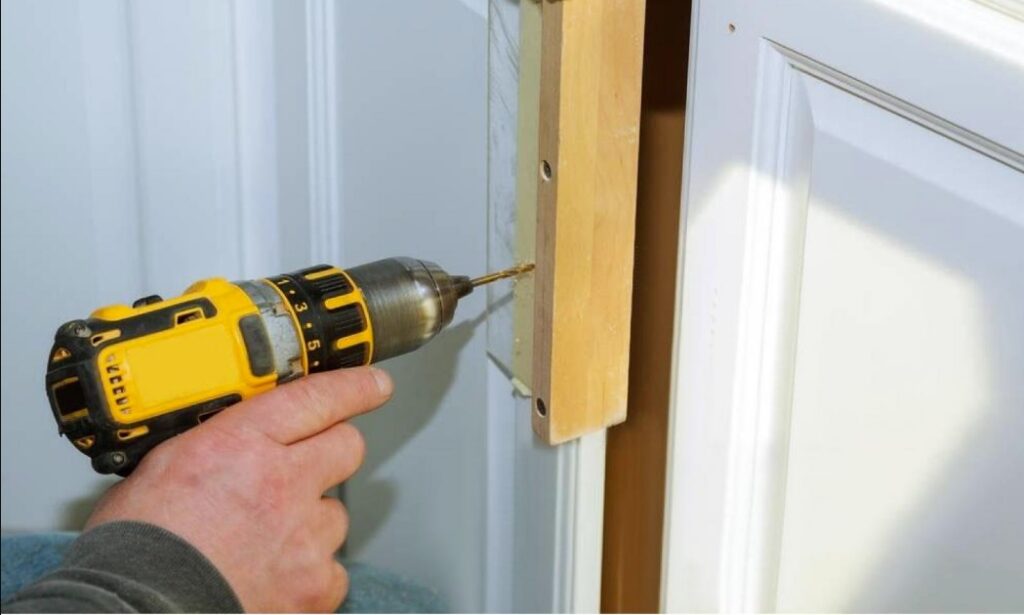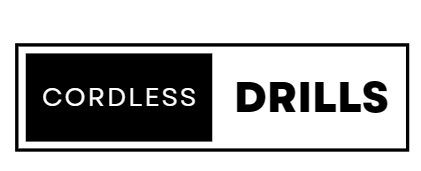
Drilling into tight spaces isn’t easy However, with the right equipment and methods you can finish the job. Here are some suggestions and techniques for drilling in tight areas:
Make use of a right-angle attachment for your drill : An attachment for a right-angle drill is an excellent tool that allows you to reach into corners that are tight as well as other areas that are difficult to reach. It allows you to attach your drill bit in an angle with the drill, making it easier to get into restricted space.
Make use of an extension shaft that is flexible: A shaft extension that is flexible is another tool that will help you drill in tight areas. It attaches to the drill, allowing you to increase the reach of the drill bit. The extension’s flexibility lets you bend and twist it to reach the most difficult angles.
Make use of a smaller drill bit : If you don’t own a right-angle attachment for your drill or a shaft extension that is flexible it is possible to drill in tight spots with a smaller drill bit. A smaller drill bit allows you to place your drill close to where that you’re drilling, which makes it easier to drill into the tightest of areas.
Note your drill bits : When drilling in tight areas it may be difficult to determine the location where your drill is placed. To help you discern where your drill bit is, mark the drill bit using tape or markers. This will provide you with the visual clue to assist you in stopping drilling in the correct depth.
Use a center punch : If you’re drilling through metal it is possible to utilize a center punch to establish a point of entry for the drill bit. Center punches are a device which creates a small notch into the material, making it simpler to begin drilling.
Select the correct drill bits: It’s vital to select the appropriate drill bit to complete the task. Materials have different requirements for kinds of drill bits, so make sure to pick a bit suitable with the type of material that you’re working on.
Make sure your drill is properly positioned : If you’re drilling in tight areas it’s crucial to position your drill in a proper manner. Be sure that the drill is parallel to the surface that you’re drilling on and use gentle pressure while you drill.
Utilizing lubrication will make the process easier for drilling into difficult space. Lubrication can reduce friction, which makes it simpler to drill through difficult materials.
Take Frequent Breaks : Working inside tight places can be exhausting and it’s essential to stop as often as you need. Make frequent breaks to relax your arms and allow your muscles the chance to rest and recover.
Practice: The most effective way to improve in drilling tight spaces is by practicing. You can try drilling in various positions and angles in order to discover what is most effective for you. Through practice, you’ll get more comfortable and proficient at drilling in tight areas.
Recommended :
Is it Legal to Take Cordless Drill Batteries on a plane ?
Top Rated 20V Cordless Drill to Buy
Cordless Drills which are very Light Weight to Handle
Ultimate Tips and Tricks to drill into a Brick
Drilling Holes in Tight Spaces Tips and Tricks Other than the above
“Drilling in tight spaces can be a problem however it doesn’t have to be! By following our step-bystep guide that will teach you how to learn the skill of drilling into tight spaces with ease and aplomb.
From choosing the best drill and attachments to getting the perfect angle, our advice can help you conquer the most difficult of space. Let go of awkward angles, and say welcome professional outcomes!
If you’re a professional contractor or DIY enthusiast, this guide is for everyone who wants to enhance their drilling abilities.”
- Make use of a compact and light drill to drill in restricted space
- You might want to consider the use of a cordless drill or an right-angle drill to drill at 90-degree angles.
- Choose the right drill bit that is suited to the material that you are drilling into
- Make use of a guide, like a collar or tape to ensure the drill bit stays in the right place
- Make sure to work slowly so as to avoid slipping and overheating the drill bit
- Make use of a center-punch to create a small ding into the material prior to drilling.
- Think about using a stopper to restrict how deep the hole can be
- Make use of a shaft that is flexible to access difficult spaces
- You might want to consider using a drill press for drilling in a controlled and controlled way within small areas.
What kinds of drills are employed in tight spaces ?
When drilling in tight places small and light drills are usually employed. The cordless drill is often the best option since they don’t require a power cord, and are easy to maneuver into tight areas. Furthermore, a right-angle drill is an excellent alternative since it permits users to drill at 90 degrees that can be beneficial for tight spaces. Other options include:
When working in tight areas it is essential to use the correct drill to make sure you get the job done in a safe and efficient manner. There are several kinds of drills specially designed for this type of situation:
Right Angle Drills feature an angle of 90 degrees, making it easier to reach narrow spaces that are difficult to access with a conventional drill. They’re light and compact making them simple to maneuver around tight spaces. There are many right angle drills utilized in HVAC, plumbing, or electrical jobs.
Pistol Grip Drills They come with a distinctive handle, which makes them easy to control and maneuver through restricted areas. They’re also light and compact and therefore suitable for use in small spaces. The grip drills for pistols are typically employed in woodworking and construction.
Cordless Drills : Cordless drills are a fantastic alternative for small spaces since they’re light and easy to move around. They’re also powered by batteries, so you don’t need to worry about finding a power outlet. Remember that they need frequent charging of batteries and do not be as powerful as corded drills.
Mini Drills : Mini drills are small and compact, which makes them ideal for use in tight areas. They’re also light making them simple to move. Mini drills are often employed in crafts and hobbies and in tight spaces such as plumbing, HVAC, and electrical work.
Flexible shaft drills feature an elongated shaft that can bend and turn, allowing the drill bit to access tight areas which are hard to reach using a conventional drill. They’re also light and easy to maneuver into restricted spaces. They are widely employed in plumbing, HVAC as well as electrical work.
When selecting a drill for narrow spaces, it is important to consider the specific needs of the task. Considerations like the type of material you’re drilling the shape and size of the area, as well as the speed and power you require for the job should be considered. With the correct drill working in tight places can be secure and efficient.
What kinds of drill bits do you use for drilling in tight areas ?
In tight places the kind of drill you select is equally crucial in the same way as choosing the right drill. Below are a few kinds of drill bits most commonly used in tight areas:
Spade Bits : These are paddle-shaped, flat drill bits, which are typically used to drill large holes through wood. They are compact and short which makes them perfect to use in tight spaces.
Auger Bits: Auger pieces feature threaded tips as well as a long, spiraling shaft. They are typically employed to drill deep holes in wood. They can be used in tight areas.
The Brad-Point Bits come with an angled tip that assists to ensure the bit stays aligned while drilling. They are typically employed for drilling holes into wood, and are perfect to use in tight areas.
Cobalt Bits: Cobalt bits are made of high-speed steel which has been blended with cobalt. They are extremely tough and durable, and are typically utilized for drilling in metal. They are great for tight spaces since they cut through hard materials effortlessly.
Flexible Bits : These bits are designed to bend and bend, allowing you get into tight spaces that are difficult to reach using a straight drill. They are often used to drill holes in ceilings and walls.
When selecting a drill for small areas, it is crucial to think about the kind of material you’ll be drilling into as well as the dimensions and shape of the area. When you choose the correct drill bit, you’ll be able to make sure that you can complete the job in a safe and efficient manner.
Conclusion :
In the end drilling holes in tight spaces is difficult however, with the proper tools and methods, it can be accomplished with ease and safety. Selecting the correct drill and bit, utilizing stops and guides and taking it slow and using tools that are specialized such as flexible shafts or drill presses will make a huge differences in the outcome of the project. It’s crucial to spend the time to think about the project and assess the area and pick the best tools to complete the task. With these tips and tricks, anyone can drill holes even in tight areas with confidence.
Faqs :
What kind of drill should I choose to drill tight spaces?
It is suggested to utilize a compact and lightweight drill when working in small spaces, like the right-angle drill, or a cordless drill. These kinds of drills are more easy to maneuver through tight spaces.
What kind of drill is best for small areas?
The type of drill that you select will be based on the type of material you’re drilling into. For instance, if you are drilling in wooden material, then a spade or a forstner bits could be the most suitable choice. For metal the cobalt or titanium-coated drill bit might be better.
How do I stop drilling bits from sliding into restricted areas?
Utilizing a guide, for example cloth or even a collar that is attached on the drilling bit will help keep the bit of drill the right location and avoid slipping.
How do I precisely mark the location I’d like to drill in tight places?
Utilizing a center punch to make a small indentation into the material prior to drilling will help to ensure that the drill is in the proper location.
Do I need a drill press to drill in restricted space?
Yes it is true that a drill press could be beneficial for drilling in tight places since it lets you drill precisely and controlled way. But, it might not be the best option for every situation.
Be patient and take your time as you drill in small areas to avoid damage to the area around it and to make sure you are safe.

